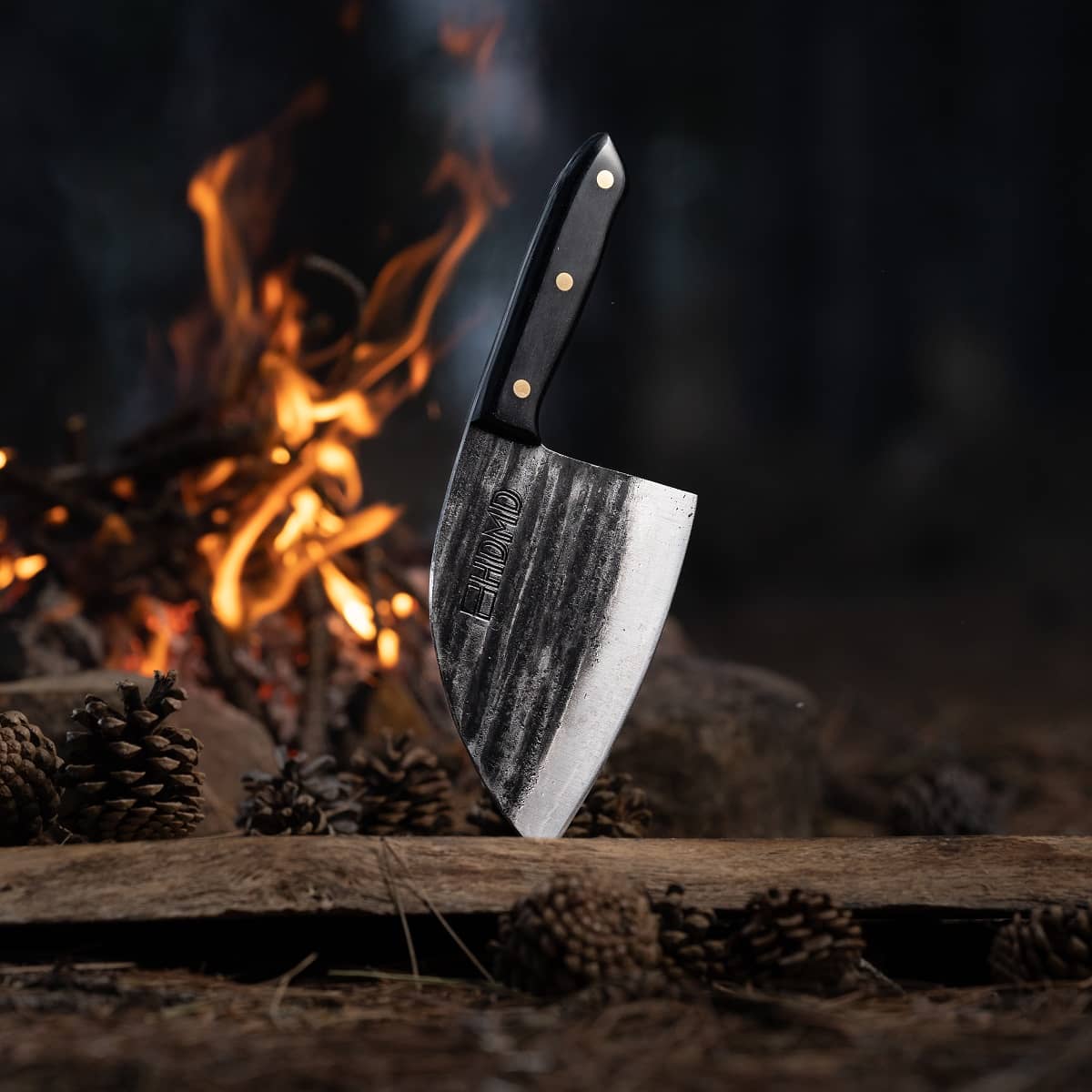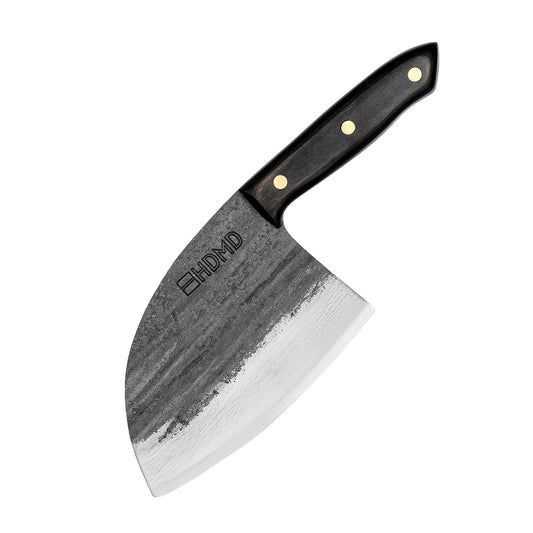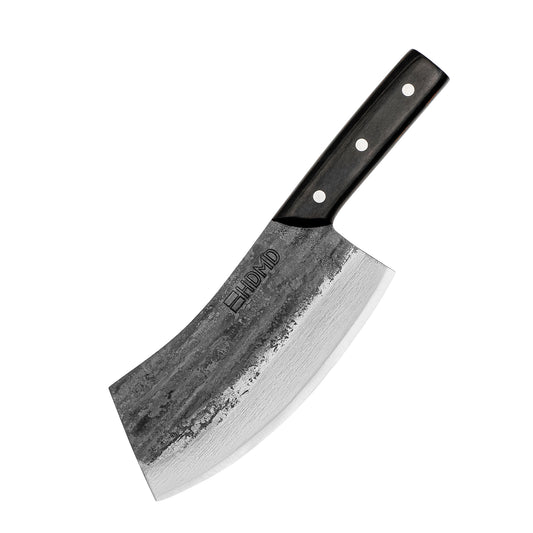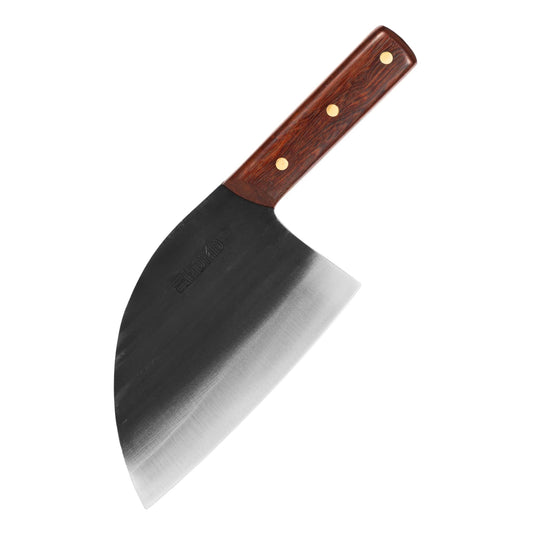Eggplant, a famous fruit (yes, they are not classified as vegetables), especially in Chinese and Indian cuisine, stands out with its flavor. Eggplants are an excellent ingredient to add to your diet if you have diabetes, as the polyphenols found in them help process sugar. Though overeating eggplant can cause unpleasant feelings due to alkaloids, consuming eggplants at moderate amounts can have health benefits.
In this article, we'll talk everything about eggplants, also known as aubergines, how you can cut them, store them, and many more.
Things to know before selecting an eggplant
Here are a few things you should keep in mind when shopping for a ripe eggplant.
- A good eggplant should be slightly firm but not too hard. When pressing your fingers against the body, it shouldn't punch through it and bounce back slightly.
- The skin should be shiny, smooth, and not wrinkled. Often, the wrinkled skin of an eggplant indicates overripeness, which is also softer at the same time than what you're looking for in most cases.
- When taking an eggplant in your hands, you should feel the weight of it. Don't shy away from an eggplant if the weight surprises you.
Additionally, large eggplants generally tend to be more bitter as they have more seeds. This is due to the bitterness coming from the seeds. The bigger the eggplant, the more bitter it is going to taste as it has more seeds.
Prepare eggplant before cutting
Now that you have an idea about what to look for in a good eggplant, here is everything you need to know about preparing and cutting.
First and foremost, hold the eggplant under running water and gently rub it with your hands to get rid of any dirt. Do not use soap or any form of detergent to clean an eggplant, as the skin tends to absorb quickly. However, you can use fruit or vegetable wash spray or similar products that are food-safe. After cleaning the eggplants, dry them using a paper towel before cutting.
Cutting eggplant
To cut an eggplant, you only need two things: your chef's knife or any knife of your choice that can cut eggplant and a stable cutting surface, preferably a wooden cutting board.
Begin cutting an eggplant by trimming it. Remove the green stem by cutting it, then make another cut about a quarter of an inch at the bottom. Cutting the bottom of the eggplant will give you an easier time to work with, as you can stand it on the cutting board.
Eggplant sticks
Turning whole eggplants into sticks is a very versatile way to cut them. You can cut the eggplant into long and thin slices, or shorter and thicker sticks, much like french fries. Here is how to cut an eggplant this way.
- Take your trimmed eggplant and cut it in half at its length.
- If it's a thick eggplant you're cutting, you can make another cut down in the middle to make the sticks slimmer.
- Halve the eggplant pieces if you're looking to make them shorter. This step is entirely optional and depends on the eggplant you have in hand.
- Lastly, slice the eggplants in the desired thickness.
The best way to use eggplant sticks is to fry them. One recipe we recommend trying is to coat them with eggs and breadcrumbs like preparing fried chicken. The result is similar to cheese sticks but much lower in calories and healthier.
Eggplant cubes
One thing to keep in mind before turning eggplants into small chunks is they will shrink when cooked. This is due to the moisture discharging from the eggplant and lessening down in size. So, it would be best to cut them twice the size you're looking to get after cooking.
- Cut the eggplant in half.
- Place the flat side on the cutting board and slice it vertically.
- Take one piece of the cut eggplant to lay it flat on the cutting board.
- Make slices the long way to cube them and determine one side of the thickness.
- Finally, cut the eggplant into cubes.
Cutting eggplants this way is suitable for stir-fry, salads, soups, and to complement main dishes along with other vegetables.
Eggplant wedges
Eggplant wedges are also versatile enough that you will be able to cut them in multiple sizes. Here is how to get the perfect eggplant wedges despite the long shape of an eggplant.
- Depending on the length of the eggplant, cut it into pieces to get cylinder shapes.
- Cut each piece into quarters.
- At this point, you already have wedges but if it's a thick eggplant you've cut, halve each quarter piece to make them smaller.
When you're oven-roasting foods and want to add eggplants into the mix, this is the best way to cut them. Once again, note that eggplants will reduce in size after cooking but not as much as cube cuts.
Eggplant slices
The most straightforward way to cut eggplants, perhaps also the fastest, is to cut them into slices. Here is how.
- Place the trimmed eggplant on the cutting board.
- Start slicing. It's as simple as that.
From baking to stir-frying, the ideal thickness of the cuts should be about half an inch, but go ahead and cut them into any size that suits the purpose.
Now, you know how to cut eggplant in four different ways. It's up to you to utilize them in your meals.
Ways to cook eggplant
Oven-roasting
With oven-roasted eggplants, the aim is to have caramelized edges while keeping the juicy inside. The easiest way to go about it is by tossing large pieces of eggplants covered with olive oil in a hot oven. The temperature needs to be high so that the edges are sealed and hold the juices inside, like cooking a steak. Cook 1.5 inch cubes or slices of eggplants at 250 C/485 F for about 20 minutes, then flip and cook for another 10 minutes. Sprinkle a bit of thyme or parmesan over, and the result is a feast.
Tip: Don't overcrowd the cooking tray. The eggplants should spread evenly without climbing on top of each other. Otherwise, you'll get mushy eggplants.
Stir-frying
You can stir-fry eggplants by themselves or with vegetables. Heat two tablespoons of cooking oil and toss the eggplants sticks. Stir occasionally and fry the eggplants until browned in parts and softened. With eggplants, you can utilize sweet peppers, garlic, diced tomatoes, or any other ingredient that you find fit.
Other ways to cook eggplant
Roasting and stir-frying are the fastest way to cook an eggplant but aren't the only way you can cook. You can grill, bake, or mash eggplants into a dipping sauce with the help of spices. If you're up for a challenge, you can also scoop out some of the flesh from the inside and stuff them with fillings.
Should you peel an eggplant before cutting?
The entire eggplant aside from the stem is edible. It's up to you to keep the skin or peel it. Some prefer to peel their fruits and vegetables; some don't mind them.
However, with larger eggplants especially, the skin tends to be bitter. This bitterness may pose a problem, and if you don't like the bitter taste that comes with the foods you eat, peel them away.
How to store eggplants?
You can store eggplants at room temperature, out of direct sunlight. However, they're best kept in the refrigerator for up to five to seven days. Keep eggplants in a plastic bag and try eating them in two to three days after purchasing as it's best then.
Keep in mind that when eggplant is cut, it will begin going bad quickly due to the moisture releasing. Make sure to cut as much eggplant as you need to get in the way of wasting them. Though cutting up as many eggplants as you need is the goal, you can store cut eggplants by drizzling a bit of lemon juice and keeping them in an airtight bag.
Eggplant nutrition facts
First and foremost, eggplants are very dense in nutrients. Though they don't contain a high amount of a single nutrient like some fruits and vegetables, eggplants are extremely rich in variety. You can get a sizeable amount of manganese, potassium, folate, and vitamins K and C from eggplants.
Here are nutrition facts for one cup of eggplant, according to the US Department of Agriculture.
- Calories: 34.6
- Carbohydrates: 8.64 g
- Protein: 0.8 g
- Fat: 0.2 g
- Fiber: 2.5 g
With low calories and fat, and a considerably high amount of dietary fiber, eggplants help the body control blood sugar.
A fun fact about eggplants is that they contain nicotine, the addictive substance found in cigarettes, but in minimal doses. If you think eating too many eggplants will get you hooked, there is nothing to worry about. To get the same amount of nicotine from eggplants as a cigarette, you'll need to eat about 20 pounds worth.
FAQs on eggplants
Why is eggplant called eggplant?
In the past, eggplants were much smaller than today and had a yellowish-white color, pretty much looking like an egg. That's where the name eggplant comes from. Over time, plant breeding to improve quality and nutrition changed the look of the eggplant, but what we call them is still the same.
Can eggplant be frozen?
You surely can freeze eggplants, but you will have some work to do before doing that. Because water expands when frozen and the eggplant has high water content, you will have a soggy eggplant when melted. To avoid this, we recommend slicing eggplants into one inch thick pieces and baking them for about 15 minutes at 350 F (175 C), and freezing them after cooling down completely.
Are eggplant seeds edible?
The eggplant seeds are entirely edible. If they weren't, eggplants would be extremely challenging to prepare and wouldn't be as favorable. As mentioned above, eggplant seeds have a bitter taste. If you don't favor this as much, lightly removing the seeds with the edge of the knife can eliminate some of the bitterness.
What are some side effects of eating eggplants?
When consumed in moderate amounts, eating eggplants won't result in any noticeable results unless you're allergic to them. However, eating raw or too many eggplants can lead to diarrhea, nausea, and an upset stomach. Make sure to cook eggplants thoroughly and avoid eating too much to prevent undesirable outcomes later on.
How to prevent eggplants from turning brown?
After cutting eggplants and making them wait before cooking, they can turn brown as apples do. The same as preventing any other fruit or vegetable from browning, squeeze lemon juice over the eggplants to get in the way of it.
That's everything about eggplants, and regardless of how you cut ingredients, you'll always need knives that are top of the class. Visit our collection to find handmade kitchen knives that will handle any work you throw at them.





